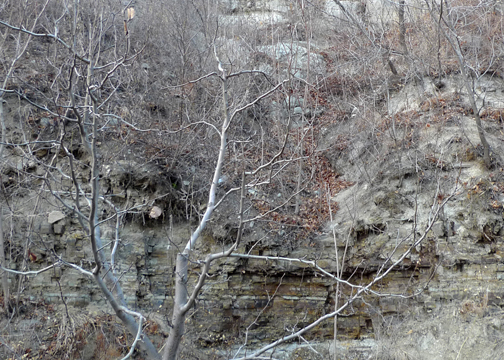Abstract
Some fossil plants, previously identified as angiosperm species, have been reported from the “Jiulongshan”/Haifanggou Formation at the Sanjiaochengzi fossil locality in Huludao City, western Liaoning, Northeast China. However, the precise ages of these fossil plants remain uncertain. To address this issue, we conducted LA-ICP-MS zircon U-Pb dating on two tuffaceous interlayer samples from the fossil-bearing horizon of this section. The resulting ages of 159.9 ± 0.5 Ma and 160.1 ± 0.5 Ma constrain the depositional age of the fossil-bearing horizon to the Late Jurassic (Oxfordian stage). By integrating these chronological results with regional stratigraphic correlations, we determine that the fossil-bearing horizon of the Sanjiaochengzi section belongs to the lower part of the Tiaojishan Formation.
References
- Chu, Z., He, H., Ramezani, J., Bowring, S.A., Hu, D., Zhang, L., Zheng, S., Wang, X., Zhou, Z., Deng, C. & Guo, J. (2016) High-precision U-Pb geochronology of the Jurassic Yanliao Biota from Jianchang (western Liaoning Province, China): age constraints on the rise of feathered dinosaurs and eutherian mammals. Geochemistry, Geophysics, Geosystems, 17, 3917–3928. https://doi.org/10.1002/2016GC006529
- Herendeen, P.S., Friis, E.M., Pedersen, K.R. & Crane, P.R. (2017) Palaeobotanical redux: revisiting the age of the angiosperms. Nature Plants, 3, 17015. https://doi.org/10.1038/nplants.2017.15
- Huang, D.Y. (2015) Yanliao Biota and Yanshan movement. Acta Palaeontologica Sinica, 54 (4), 501–546. [In Chinese] https://doi.org/10.19800/j.cnki.aps.2015.04.008
- Huang, D.Y. (2016) The Daohugou Biota. Shanghai Scientific and Technical Press, Shanghai, 334 pp. [In Chinese]
- Huang, D.Y. (2019) Jurassic integrative stratigraphy and timescale of China. Science China Earth Sciences, 62, 223–255. https://doi.org/10.1007/s11430-017-9268-7
- Huang, D.Y., Cai, C.Y., Fu, Y.Z. & Su, Y.T. (2018) The middle-late Jurassic Yanliao entomofauna. Palaeoentomology, 1 (1), 3–31. https://doi.org/10.11646/palaeoentomology.1.1.2
- Huang, T.K. (1960) An initial summary on the tectonic characteristics of the geology of China. Acta Geologica Sinica, 40 (1), 1–31. [In Chinese]
- Liu, Z.J. & Wang, X. (2016) A perfect flower from the Jurassic of China. Historical Biology, 28, 707–719. https://doi.org/10.1080/08912963.2015.1020423
- Ludwig, K.R. (2003) User’s manual for Isoplot 3.0. A geochronological toolkit for Microsoft Excel. Berkeley Geochronology Centre: Berkeley, California, Special Publication, 4a, 1–70.
- Rubatto, D. & Gebauer, D. (2000) Use of Cathodoluminescence for U-Pb Zircon Dating by Ion Microprobe: Some Examples from the Western Alps. In: Pagel, M., Barbin, V., Blanc, P., Ohnenstetter, D. (Eds.), Cathodoluminescence in Geosciences. Springer Berlin Heidelberg, Berlin, Heidelberg, pp. 373–400. https://doi.org/10.1007/978-3-662-04086-7_15
- Wang, L.L., Hu, D.Y., Zhang, L.J., Zheng, S.L., He, H.Y., Deng, C.L., Wang, X.L., Zhou, Z.H. & Zhu, R.X. (2013) SIMS U-Pb zircon age of Jurassic sediments in Linglongta, Jianchang, western Liaoning: Constraint on the age of oldest feathered dinosaurs. China Science Bulletin, 58 (14), 1346–1353. [In Chinese] https://doi.org/doi: 10.1360/972012-535
- Wang, X. (2010) Schmeissneria: An angiosperm from the Early Jurassic. Journal of Systematics and Evolution, 48, 326–335. https://doi.org/10.1111/j.1759-6831.2010.00090.x
- Wang, X. & Wang, S. (2010) Xingxueanthus: An enigmatic Jurassic seed plant and its implications for the origin of angiospermy. Acta Geologica Sinica, 84, 47–55. https://doi.org/10.1111/j.1755-6724.2010.00169.x
- Wang, X., Duan, S.Y., Geng, B.Y., Cui, J.Z. & Yang, Y. (2007) Is Jurassic Schmeissneria an angiosperm? Acta Palaeontologica Sinica, 46 (4), 486–490. [In Chinese] https://doi.org/110.3969/j.issn.0001-6616.2007.04.011
- Wang, Y.D., Zhang, W., Zheng, S.L., Zhai, J. & Li, N. (2005) New discovery of fossil cycad-like plants from the Middle Jurassic of West Liaoning, China. Chinese Science Bulletin, 50, 1804–1807. https://doi.org/10.3321/j.issn:0023-074X.2005.16.021
- Wang, Y.D., Tian, N., Jiang, Z.F., Yang, X.J. & Ding, Q.H. (2017) Recent advances in Mesozoic fossil wood studies in China: diversity variations and palaeoclimate implications. Earth Science Frontiers, 24 (1), 52–62. https://doi.org/10.13745/j.esf.2017.01.004
- Wong, W.H. (1927) Crustal movements and igneous activities in eastern China since Mesozoic time. Bulletin of the Geological Society of China, 2, 149–156.
- Zheng, S., Li, H., Jiang, Z., Zhang, W. & Liu, Z. (2012) Discovery of the most complete fossil leaves of Ctenis kaneharai Yokoyama. Geology and Resources, 21 (1), 93–97. [In Chinese] https://doi.org/10.3969/j.issn.1671-1947.2012.01.014


